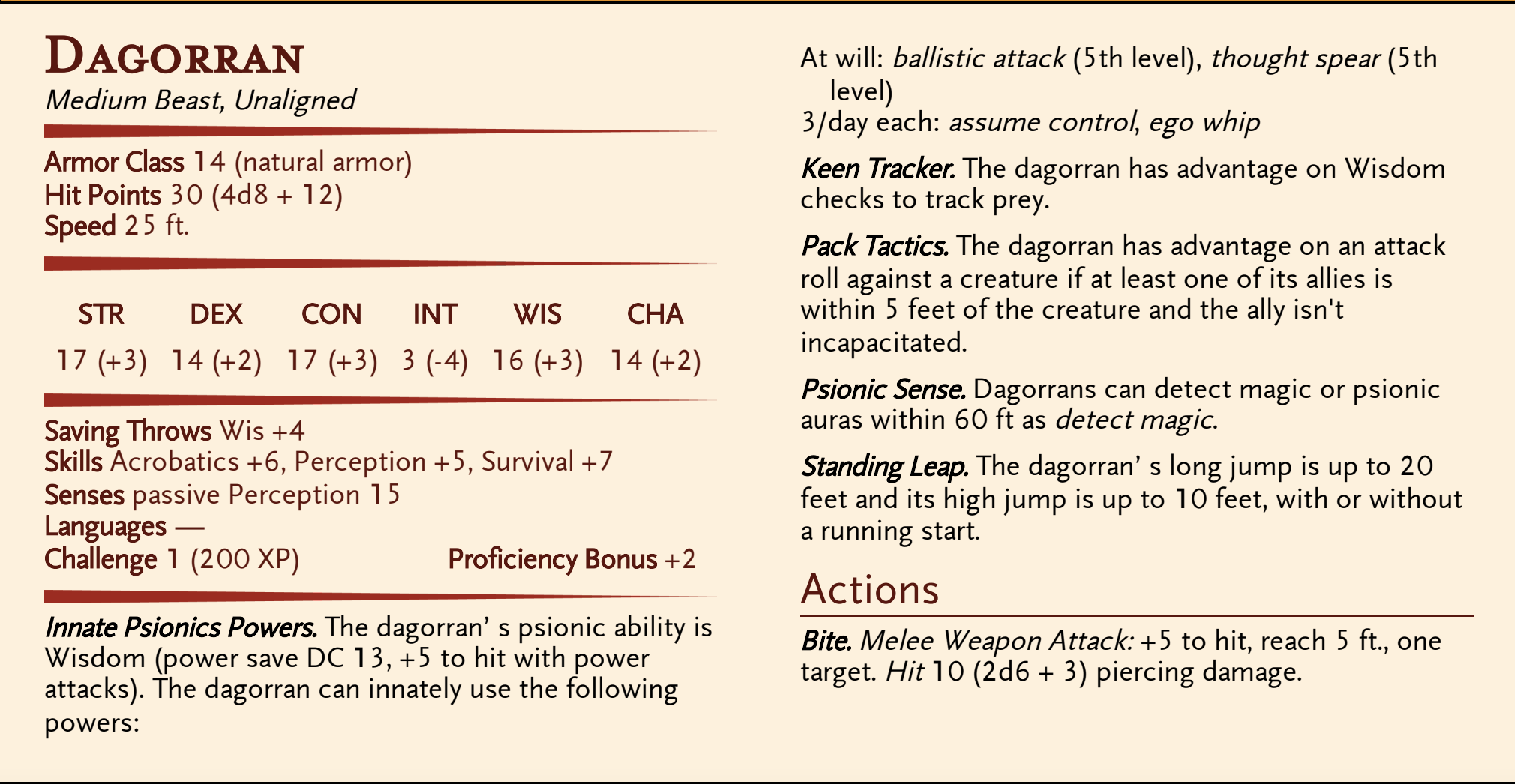Dagorrans hunt in packs and track prey
by using their innate psionic sensitivity to pick up and
follow the psionic signature of most intelligent and psionic
creatures. Such imprints can be picked up even if they
are several days old. These creatures usually launch their
attack with their detonate psionic science. The attack is
aimed at the ground near a victim, injuring and often
killing their prey with the shrapnel from the explosion. If
the target survives the detonation, the dagorrans leap past
their target, attacking with their bite in mid air. After a
successful hit the dagorrans are in melee and can only
make further charging attacks by breaking combat.
While the pack attacks, the lead dagorran tries to seize
control of the victim using the control body devotion. If
there is more than one opponent, the leader picks the one
with the least psychic energy remaining. Psychic energy
levels are sensed innately because of the beasts psionic
sensitivity. If combat is going poorly, survivors disengage
combat and use their ballistic attack ability.
The dagorrans have an ancient hatred of thri-kreen. If a
thri-kreen is among the opponents, all attacks are directed
at it and if more than one is present, the individual with
the least psychic energy is targeted.
Terrain: Wastelands, tablelands
Frequency: Rare
# Appearing: 2-8
A dagorran is a froglike beast with golden-hued skin,
green eyes, and a green crystalline growth between its
shoulders. The skin is valued for its protective qualities by
warriors as armor, and by wizards as a material component
for casting protective spells. The green crystalline growth is
the source of these creatures’ psionic and tracking abilities
and is valued by defilers and preservers for several mindaffecting potions. It has large razorsharp teeth that it uses
in hunting and eating its prey. Its large, muscular legs are
used for jumping, running, and walking. The dominant
dagorran or leader has a larger crystalline growth.
A dagorran doesn’t communicate in any audible
manner, but uses its psionic abilities to convey limited
thoughts and ideas. It occasionally emits a deep, guttural
croaking noise but these sounds have no meaning to the
dagorran.

